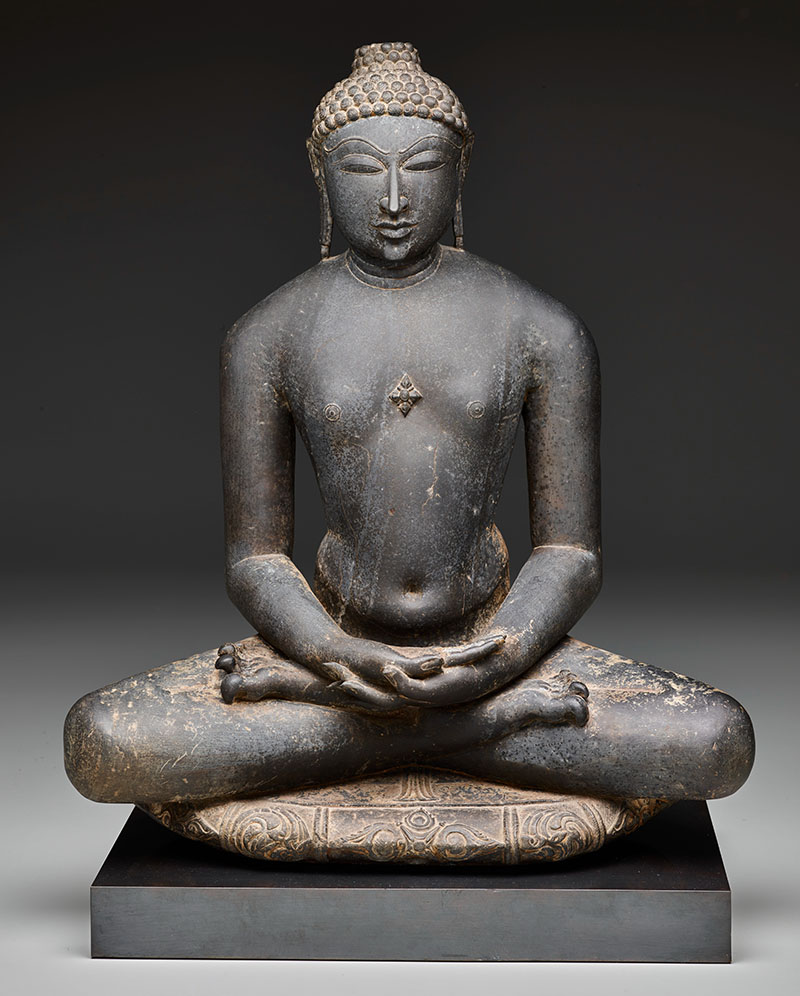Mask of Vaikuntha Vishnu, late 5th century. Learn more about 5th century masks
Designed by 

Meaning “sky-robed” in Sanskrit, it is one of two major ideologies within Jainism, the other being Svetambara. The two streams of thought differ on points of doctrine, such as theology, manner of worship and the ritual practices of monks and nuns. In the Digambara practice, the images of the Tirthankaras are left unadorned, as opposed to the Svetambara practice of adorning the images. The two ideologies also differ on the nature of a keval jnani (omniscient being), with the Digambara tradition believing the beings can live without food. In Digambara practice, initiated monks do not wear clothes and receive food from disciples in their hands, unlike the Svetambara practice of monks and nuns wearing white garments and receiving food in pots. Digambara also does not bestow equal importance on texts, which are codified as scriptures within the Svetambara tradition. The rift between the two ideologies within the religion is difficult to date, but historians suggest it is likely to have been formalised in the fifth century CE.